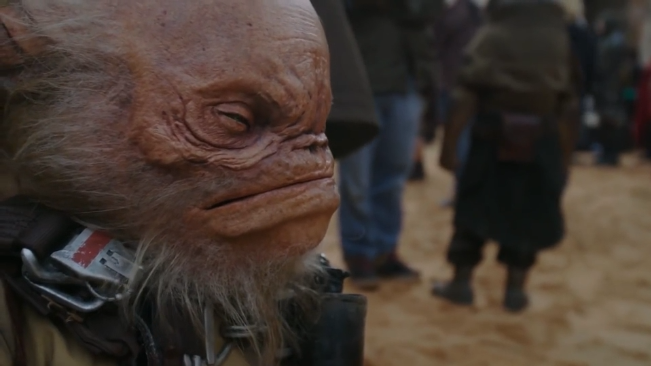Via Comicbook.com:
When Lucasfilm’s first film under Disney, Star Wars: The Force Awakens was in development, “Practical Effects!” became a practical rallying cry for the movie. Director J.J. Abrams preached it like a religion, entire effects reals showing real people in rubber (well, much more advanced than rubber, but still) costumes, crazy prosthetics, and crazier pupets were shown off. At Star Wars Celebration Anaheim, they even rolled the adorable new droid BB-8 out onto the stage in a glorious “look ma, no hands!” moment.
That continued on, though without quite so much touting, in Rogue One: A Star Wars Story, where VFX Supervisor John Knoll also played the role of story developer and executive producer, putting him even more closely into each step of the effects process. An ILM veteran, he knew the benefits of CGI, but also knows how when it’s married to in-camera work it all comes together that much better.
“In terms of physical effects versus visual effects, I’m not proprietary about any of that stuff,” Knoll told Comicbook.com in an interview,” we just want to do the smar thing for the show [industry term for any one project]. If there’s a good way of doing something physically, we should do that. I had a great relationship with Neil Ellis on the show, I thought we worked really well together to try and figure out the right ways to do things that got us the optimal results.”
Indeed, Ellis told Comicbook.com that from the very beginning of development on Rogue One, Knoll “gave me free reign, and just said to put as much in front of the camera as [I] can. ‘Don’t worry about smoke, we’ll deal with that,'” was one of Knoll’s few notes early to Ellis, “which is great, because a lot of the time you do these projects and they don’t want any smoke, they want it as clean as possible and then they cut out their layers later on and the way that Gareth shoots as well, you know. We just wanted to get as much in camera as we could, and John would sort it out later in his scene.”
The way director Gareth Edwards shoots is extremely hands-on. Animator Hal Hickel describes his technique as “this very visceral, almost documentary style of shooting where he does a lot of handheld cameras.” When Hickel and his team observed that, they knew that if he couldn’t do that same thing, “go into the scene and find angles that feel good to him” in the space battle scenes, they would feel disjointed compared to the rest of the film.
So the team at ILM did what anyone in that situation would do, and invented an entirely new way of shooting a digital sequence. They built a studio where a virtual environment could be projected all around, on teh floor and walls and ceiling. Then they shaped a basic animation, “these story beats, independent of camera,” and gave Gareth a handheld tablet camera that let him literally move through space and find the angles he wanted the TIE fighters and X-wings to be soaring through the air at.
“I didn’t want the style of the movie to suddenly switch every time we went from live-action to some kind of virtual world,” Hickel said to Comicbook.com. “The animation group would create a beat, sort of a chunk of the battle, a moment, and animate it kind of in the round, without respective camera angles,” and Gareth took over from there.
Now, the magic makers at ILM are working on Star Wars: Episode VIII, then they’ll go right into Han Solo and into Episode IX after that; all while other members of the team will work on other films, as the company, while known for its Star Wars work, does effects for all sorts of films across the industry. They’ll take some of what they learned from Rogue One into the next project – and probably invent something else brand new along the way.
Rogue One: A Star Wars Story is in theaters now.

